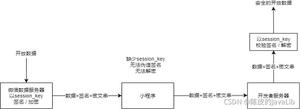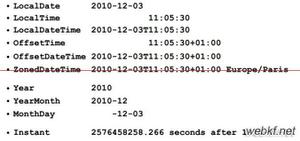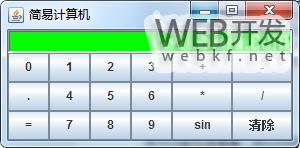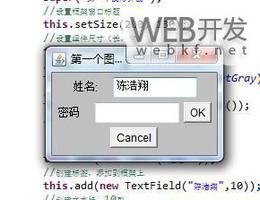学习Java中的日期和时间处理及Java日历小程序的编写
Java 在 java.util 包中提供了 Date 类,这个类封装了当前的日期和时间。
Date 类支持两种构造函数。第一个构造函数初始化对象的当前日期和时间。
Date( )
下面的构造函数接收一个参数等于自1970年1月1日午夜起已经过的毫秒数
Date(long millisec)
一旦有一个可用的日期对象,可以调用以下任何一种支持的方法使用时间:
| SN | 方法和描述 |
|---|---|
| 1 | boolean after(Date date) 如果调用Date对象包含或晚于指定的日期则返回true,否则,返回false。 |
| 2 | boolean before(Date date) 如果调用Date对象包含或早于日期指定的日期返回true,否则,返回false。 |
| 3 | Object clone( ) 重复调用Date对象。 |
| 4 | int compareTo(Date date) 调用对象的值与日期比较。如果这两个值相等返回0。如果调用对象是早于日期返回一个负值。如果调用对象迟于日期返回正值。 |
| 5 | int compareTo(Object obj) 以相同的compareTo(Date)操作 如果obj是一个类日期。否则,它会抛出一个ClassCastException。 |
| 6 | boolean equals(Object date) 如果调用Date对象包含相同的时间及日期指定日期则返回true,否则,返回false。 |
| 7 | long getTime( ) 返回自1970年1月1日起已经过的毫秒数。 |
| 8 | int hashCode( ) 返回调用对象的哈希代码。 |
| 9 | void setTime(long time) 设置所指定的时间,这表示从1970年1月1日从午夜的时间和日期以毫秒为单位经过的时间。 |
| 10 | String toString( ) 调用Date对象转换为字符串,并返回结果。 |
获取当前日期和时间
在 Java 中容易得到当前的日期和时间。可以使用一个简单的 Date 对象的 toString() 方法,如下所示打印当前日期和时间:
import java.util.Date;
public class DateDemo {
public static void main(String args[]) {
// Instantiate a Date object
Date date = new Date();
// display time and date using toString()
System.out.println(date.toString());
}
}
这将产生以下结果:
Mon May 04 09:51:52 CDT 2009
日期比较
有以下三种方式来比较两个日期:
- 可以使用 getTime() 来获得自1970年1月1日午夜十二时起已经过的毫秒数,然后比较两个对象的值。
- 可以使用 before( ), after( ), 和 equals( ) 方法,由于12日在18日前,例如, new Date(99, 2, 12).before(new Date (99, 2, 18)) 返回值为 true。
- 可以使用 compareTo() 方法,这是由 Comparable 接口定义,由 Date 实现。
使用 SimpleDateFormat 格式化日期
SimpleDateFormat 是一个具体的类,以本地方式用于格式化和转换日期。SimpleDateFormat 允许选择用户定义的模式为日期时间格式。例如:
import java.util.*;
import java.text.*;
public class DateDemo {
public static void main(String args[]) {
Date dNow = new Date( );
SimpleDateFormat ft =
new SimpleDateFormat ("E yyyy.MM.dd 'at' hh:mm:ss a zzz");
System.out.println("Current Date: " + ft.format(dNow));
}
}
这将产生以下结果:
Current Date: Sun 2004.07.18 at 04:14:09 PM PDT
简单的 DateFormat 格式代码
要指定时间格式,使用时间模式字符串。在这个模式中,所有的 ASCII 字母被保留为模式字母,其定义如下:
| 字符 | 描述 | 例子 |
|---|---|---|
| G | 时代指示器 | AD |
| y | 四位数年份 | 2001 |
| M | 年中的月份 | July or 07 |
| d | 月份中日期 | 10 |
| h | 时间 A.M./P.M.(1~12) | 12 |
| H | 天中的小时 (0~23) | 22 |
| m | 小时中的分钟 | 30 |
| s | 分钟中的秒钟 | 55 |
| S | 毫秒 | 234 |
| E | 星期中的天 | Tuesday |
| D | 年中的天 | 360 |
| F | 月中星期中的天 | 2 (second Wed. in July) |
| w | 年中的星期 | 40 |
| W | 月中的星期 | 1 |
| a | A.M./P.M. 标记 | PM |
| k | 天中的小时(1~24) | 24 |
| K | 小时A.M./P.M. (0~11) | 10 |
| z | 时区 | 东部标准时间 |
| ' | 脱离文本 | 分隔符 |
| " | 单引号 | ` |
用 printf 格式化日期
日期和时间格式用 printf 方法可以非常轻松地做到。可以使用两个字母的格式,从 t 开始并在下面给出的表格中的其中一个字母结束。例如:
import java.util.Date;
public class DateDemo {
public static void main(String args[]) {
// Instantiate a Date object
Date date = new Date();
// display time and date using toString()
String str = String.format("Current Date/Time : %tc", date );
System.out.printf(str);
}
}
这将产生以下结果:
Current Date/Time : Sat Dec 15 16:37:57 MST 2012
如果提供日期多次格式化是一种不好的做法。一个格式字符串可以指示要格式化的参数的索引。
索引必须紧跟在 % 之后,并必须由 $ 终止。例如:
import java.util.Date;
public class DateDemo {
public static void main(String args[]) {
// Instantiate a Date object
Date date = new Date();
// display time and date using toString()
System.out.printf("%1$s %2$tB %2$td, %2$tY",
"Due date:", date);
}
}
这将产生以下结果:
Due date: February 09, 2004
或者,也可以使用 < 标志。则表示相同的参数,根据前述格式规范,应再次使用。例如:
import java.util.Date;
public class DateDemo {
public static void main(String args[]) {
// Instantiate a Date object
Date date = new Date();
// display formatted date
System.out.printf("%s %tB %<te, %<tY",
"Due date:", date);
}
}
这将产生以下结果:
Due date: February 09, 2004
日期和时间转换字符
| 字符 | 描述 | 例子 |
|---|---|---|
| c | 完整的日期和时间 | Mon May 04 09:51:52 CDT 2009 |
| F | ISO 8601 日期 | 2004-02-09 |
| D | U.S. 格式时间 (月/日/年) | 02/09/2004 |
| T | 24-时制 | 18:05:19 |
| r | 12-时制 | 06:05:19 pm |
| R | 24-时制,无秒 | 18:05 |
| Y | 四位数年份 (用前行零列) | 2004 |
| y | 年份的后两位数(用前行零列) | 04 |
| C | 年份的前两位(用前行零列) | 20 |
| B | 完整月份名称 | February |
| b | 缩写月份名称 | Feb |
| m | 两位数月份 (用前行零列) | 02 |
| d | 两位数日期 (用前行零列) | 03 |
| e | 两位数日期(无前行零列) | 9 |
| A | 完整星期名称 | Monday |
| a | 缩写星期名称 | Mon |
| j | 年中的三位数天数(用前行零列) | 069 |
| H | 两位数小时(用前行零列), 00 和 23之间 | 18 |
| k | 两位数小时(无前行零列), 0 和 23 之间 | 18 |
| I | 两位数小时 (用前行零列), 01和12之间 | 06 |
| l | 两位数小时 (无前行零列), 1 和12之间 | 6 |
| M | 两位数分钟 (用前行零列) | 05 |
| S | 两位数秒钟(用前行零列) | 19 |
| L | 三位数毫秒(用前行零列) | 047 |
| N | 九位数纳秒 (用前行零列) | 047000000 |
| P | 大写上下午标记 | PM |
| p | 小写上下午标记 | pm |
| z | RFC 822 从GMT数字抵消 | -0800 |
| Z | 时区 | PST |
| s | 从 1970-01-01 00:00:00 的秒数GMT | 1078884319 |
| Q | 从 1970-01-01 00:00:00 的毫秒数GMT | 1078884319047 |
有相关的日期和时间等有用的类。欲了解更多详细信息,可以参考 Java 标准文档。
字符串转换日期
SimpleDateFormat 类有一些额外的方法,如 parse(),它试图根据存储在给定 SimpleDateFormat 的对象的格式来转换字符串。例如:
import java.util.*;
import java.text.*;
public class DateDemo {
public static void main(String args[]) {
SimpleDateFormat ft = new SimpleDateFormat ("yyyy-MM-dd");
String input = args.length == 0 ? "1818-11-11" : args[0];
System.out.print(input + " Parses as ");
Date t;
try {
t = ft.parse(input);
System.out.println(t);
} catch (ParseException e) {
System.out.println("Unparseable using " + ft);
}
}
}
上述程序的运行示例将产生以下结果:
$ java DateDemo
1818-11-11 Parses as Wed Nov 11 00:00:00 GMT 1818
$ java DateDemo 2007-12-01
2007-12-01 Parses as Sat Dec 01 00:00:00 GMT 2007
休眠一段时间
你可以进行任何期间的时间休眠,从一毫秒直到你的电脑的整个生命周期。例如,下面的程序会休眠10秒:
import java.util.*;
public class SleepDemo {
public static void main(String args[]) {
try {
System.out.println(new Date( ) + "\n");
Thread.sleep(5*60*10);
System.out.println(new Date( ) + "\n");
} catch (Exception e) {
System.out.println("Got an exception!");
}
}
}
这将产生以下结果:
Sun May 03 18:04:41 GMT 2009
Sun May 03 18:04:51 GMT 2009
测量执行时间
有时候,可能需要测量的时间点以毫秒为单位。因此,让我们再一次重新写上面的例子:
import java.util.*;
public class DiffDemo {
public static void main(String args[]) {
try {
long start = System.currentTimeMillis( );
System.out.println(new Date( ) + "\n");
Thread.sleep(5*60*10);
System.out.println(new Date( ) + "\n");
long end = System.currentTimeMillis( );
long diff = end - start;
System.out.println("Difference is : " + diff);
} catch (Exception e) {
System.out.println("Got an exception!");
}
}
}
这将产生以下结果:
Sun May 03 18:16:51 GMT 2009
Sun May 03 18:16:57 GMT 2009
Difference is : 5993
GregorianCalendar 类
GregorianCalendar 是一个 Calendar 类具体的实现,即你所熟悉的对正常 Gregorian 公历的实现。本教程中不讨论 Calendar 类,可以看看标准 Java 文档。
Calendar 的 getInstance() 方法返回与当前日期和时间默认语言环境和时区初始化的一个 GregorianCalendar。 GregorianCalendar 中定义了两个字段:AD 和 BC。这些代表在公历中定义的两个时代。
也有几个构造函数的 GregorianCalendar 对象:
| SN | 构造函数描述 |
|---|---|
| 1 | GregorianCalendar() 在默认时区与默认语言环境使用当前时间构造默认的GregorianCalendar。 |
| 2 | GregorianCalendar(int year, int month, int date) 在默认时区设置默认的语言环境用给定的日期构造一个GregorianCalendar |
| 3 | GregorianCalendar(int year, int month, int date, int hour, int minute) 用给定的日期和时间设置为与默认语言环境的默认时区构造一个GregorianCalendar。 |
| 4 | GregorianCalendar(int year, int month, int date, int hour, int minute, int second) 用给定的日期和时间设置为与默认语言环境的默认时区构造一个 GregorianCalendar |
| 5 | GregorianCalendar(Locale aLocale) 基于当前时间与给定语言环境的默认时区构建一个GregorianCalendar。 |
| 6 | GregorianCalendar(TimeZone zone) 基于当前时间,使用默认的语言环境在给定的时区构建一个GregorianCalendar。 |
| 7 | GregorianCalendar(TimeZone zone, Locale aLocale) 基于当前时间与给定语言环境的给定时区构建一个GregorianCalendar。 |
这里是由 GregorianCalendar 类提供的一些有用的方法的列表:
| SN | 方法和描述 |
|---|---|
| 1 | void add(int field, int amount) 基于日历的规则,以给定的时间字段添加指定(有符号的)时间量。 |
| 2 | protected void computeFields() 将UTC转换为毫秒时间字段值. |
| 3 | protected void computeTime() 覆盖日历转换时间域值为UTC的毫秒. |
| 4 | boolean equals(Object obj) 这个GregorianCalendar与一个对象引用比较. |
| 5 | int get(int field) 获取给定时间域的值. |
| 6 | int getActualMaximum(int field) 返回该字段可能的最大值,给定到当前的日期. |
| 7 | int getActualMinimum(int field) 返回该字段可能具有的最小值,给定当前的日期. |
| 8 | int getGreatestMinimum(int field) 对于给定的字段中返回高最低值(如果有变化). |
| 9 | Date getGregorianChange() 获取公历更改日期. |
| 10 | int getLeastMaximum(int field) 对于给定的字段返回最低的最大值,如果有变化. |
| 11 | int getMaximum(int field) 返回给定字段中的最大值. |
| 12 | Date getTime() 获取日历的当前时间. |
| 13 | long getTimeInMillis() 获取日历的当前时间长. |
| 14 | TimeZone getTimeZone() 获取时区. |
| 15 | int getMinimum(int field) 返回给定字段中的最小值. |
| 16 | int hashCode() 重写hashCode. |
| 17 | boolean isLeapYear(int year) 确定给定年份是闰年. |
| 18 | void roll(int field, boolean up) 加上或减去(上/下)的时间在给定的时间字段一个单元,不更改更大的字段. |
| 19 | void set(int field, int value) 设置时间字段与给定值. |
| 20 | void set(int year, int month, int date) 设置为年,月,日的值. |
| 21 | void set(int year, int month, int date, int hour, int minute) 设置为年,月,日,小时和分钟值. |
| 22 | void set(int year, int month, int date, int hour, int minute, int second) 设置为字段的年,月,日,小时,分钟和秒的值. |
| 23 | void setGregorianChange(Date date) 设置GregorianCalendar更改日期. |
| 24 | void setTime(Date date) 设置日历的当前时间与给定日期. |
| 25 | void setTimeInMillis(long millis) 从给定long值设置日历的当前时间. |
| 26 | void setTimeZone(TimeZone value) 将时区设置与给定的时区值. |
| 27 | String toString() 返回此日历的字符串表示形式. |
示例
import java.util.*;
public class GregorianCalendarDemo {
public static void main(String args[]) {
String months[] = {
"Jan", "Feb", "Mar", "Apr",
"May", "Jun", "Jul", "Aug",
"Sep", "Oct", "Nov", "Dec"};
int year;
// Create a Gregorian calendar initialized
// with the current date and time in the
// default locale and timezone.
GregorianCalendar gcalendar = new GregorianCalendar();
// Display current time and date information.
System.out.print("Date: ");
System.out.print(months[gcalendar.get(Calendar.MONTH)]);
System.out.print(" " + gcalendar.get(Calendar.DATE) + " ");
System.out.println(year = gcalendar.get(Calendar.YEAR));
System.out.print("Time: ");
System.out.print(gcalendar.get(Calendar.HOUR) + ":");
System.out.print(gcalendar.get(Calendar.MINUTE) + ":");
System.out.println(gcalendar.get(Calendar.SECOND));
// Test if the current year is a leap year
if(gcalendar.isLeapYear(year)) {
System.out.println("The current year is a leap year");
}
else {
System.out.println("The current year is not a leap year");
}
}
}
这将产生以下结果:
Date: Apr 22 2009
Time: 11:25:27
The current year is not a leap year
日历小程序
下面我们来看一个日历小程序。这里用传统的MVC结构,设计3个类:CalendarViewer、CalendarControlller、CalendarModel。
CalendarViewer.java主要处理UI,沿用了已有代码,整理之并抽出业务逻辑,使其专注于显示层处理。
CalendarViewer.java
public class CalendarViewer extends JWindow implements ActionListener {
JPanel calendarYmPanel = null;
JButton leftButton = new JButton("<<");
JButton rightButton = new JButton(">>");
Label yearLabel = new Label();
Label monthLabel = new Label();
Label passedDaysLabel = new Label();
JPanel calendarWdPanel = null;// 是caledar_week和calendar_days的总包容体
JPanel calendarWeekPanel = null;// 针对周列的布局
JPanel calendarDaysPanel = null;// 针对日期列的布局
JPanel calendarExitPanel = null;
JButton quitButton = new JButton("关闭");
Border emptyBorder = BorderFactory.createEmptyBorder();
CalendarController cController = new CalendarController();
public CalendarViewer() {
super();
buildUI();
}
public void buildUI() {
buildTopPanel();
buildCenterPanel();
buildBottomPanel();
setLayout(new BorderLayout());
。。。。。。
}
private void buildTopPanel() {。。。。。。}
private void buildCenterPanel() {。。。。。。}
private void buildBottomPanel() {。。。。。。}
public JPanel updateDaysPanel() {。。。。。。}
public void updatePassedDaysLabel() {。。。。。。}
public void actionPerformed(ActionEvent e) {。。。。。。}
public static void main(String[] args) {
SwingUtilities.invokeLater(new Runnable() {
public void run() {
new CalendarViewer();
}
});
}
}

UI构造主要分3块,对应图上中下3个panel。
- buildTopPanel();
- buildCenterPanel();
- buildBottomPanel();
事件监听的处理由下面方法完成。
- actionPerformed(ActionEvent e);
基于事件的UI更新由以下两个方法完成。
updateDaysPanel();
updatePassedDaysLabel();
CalendarController.java主要处理具体的业务逻辑,而所使用的一些与具体应用无关的日历算法逻辑则交给CalendarModel.java。
CalendarModel.java
public class CalendarModel {
private int daytab[][] = {
{ 0, 31, 28, 31, 30, 31, 30, 31, 31, 30, 31, 30, 31 },
{ 0, 31, 29, 31, 30, 31, 30, 31, 31, 30, 31, 30, 31 } };
public boolean isLeapYear(int year) {
return ((year % 4 == 0 && year % 100 != 0) || year % 400 == 0);
}
public int dayOfYear(int day, int month, int year) {
int leap = isLeapYear(year) ? 1 : 0;
for (int i = 1; i < month; i++)
day += daytab[leap][i];
return day;
}
public int daysOfMonth(int month, int year) {
int leap = isLeapYear(year) ? 1 : 0;
return daytab[leap][month];
}
public int dayOfWeek(int day, int month, int year) {
if (month == 1) {
month = 13;
year--;
}
if (month == 2) {
month = 14;
year--;
}
return (day + 2 * month + 3 * (month + 1) / 5 + year + year / 4 - year
/ 100 + year / 400) % 7 + 1;
}
}
建立一个二维数组,分别表示闰年与非闰年的每月天数。主要方法有:
- boolean isLeapYear(int year);判断闰年
- dayOfYear(int day, int month, int year);计算所提供日期为当前year的第几天
- daysOfMonth(int month, int year);返回当前月份的天数
- dayOfWeek(int day, int month, int year); 计算某年某月某日是星期几,这里使用了基姆拉尔森计算公式。
基姆拉尔森计算公式
- W= (d+2*m+3*(m+1)/5+y+y/4-y/100+y/400) mod 7
- d 天
- m 月
- y 年
- 1月2月换算为去年的13 14月计算
- w=0是星期一,依次类推。
以上是 学习Java中的日期和时间处理及Java日历小程序的编写 的全部内容, 来源链接: utcz.com/p/208398.html









